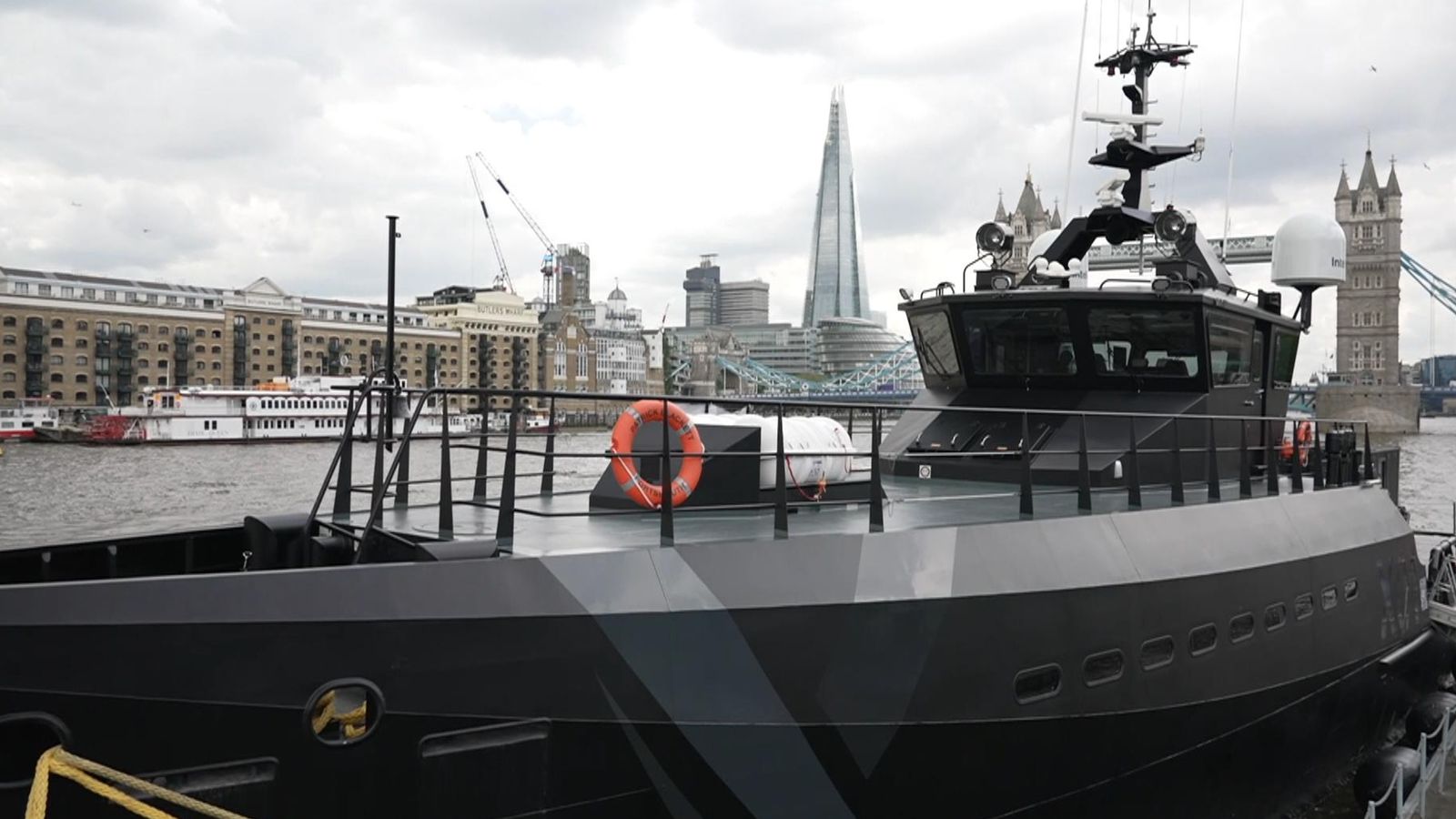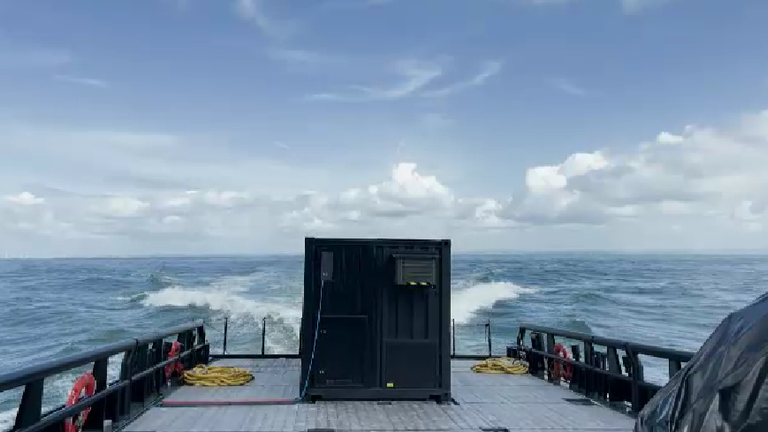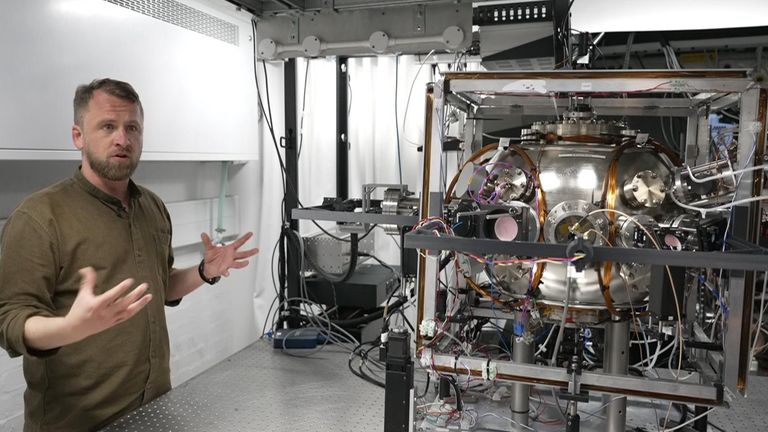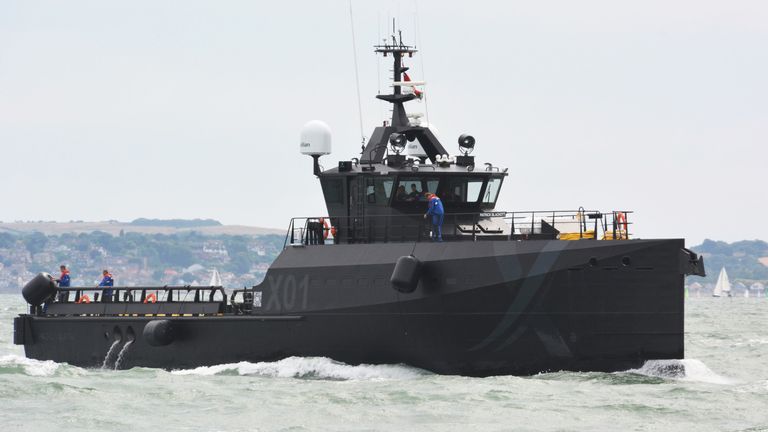The Royal Navy has carried out the first trial of a quantum navigation system that could allow a vessel to know its precise position anywhere in the world without using GPS.
The technology, developed by physicists at Imperial College in London, exploits the quantum properties of atoms to measure an object’s movement more precisely than by conventional means.
A ship equipped with the technology could navigate more accurately than with chart and compass and without satellite-based navigation on which the world now relies.
“Sometimes that can be interfered with or sometimes it doesn’t work,” said Captain Tom Ryan, head of Navy X, the Royal Navy’s research division.
“So the ability to have a new and novel way of accurately, very accurately, plotting your position is fundamental to the way the Royal Navy and the military does business.”
The Royal Navy won’t be drawn on exactly how the technology might be used.
But the fact submarines can’t use GPS while submerged, and that the Navy doesn’t tend to comment on any technology used on submarines, might be a clue.
We’re standing on the bridge of the XV Patrick Blackett, the Navy’s new experimental vessel.
The ship is sleek, with tinted windows, a glossy black hull and a menacing-looking carbon fibre drone on its deck – it’s very James Bond.
However, the quantum accelerometer it’s testing couldn’t be less so.
Sat in a shipping container and held fast with cargo straps is a white box about the size of a fridge, connected to computers.
“This is a very exotic environment for one of these kinds of sensors,” said Dr Joe Cotter, from Imperial College, who helped develop it.
“One of the big challenges is making it work in the real world where things are moving, magnetic fields are changing.
“There are lots of vibrations that we need to manage to keep this thing stable enough to be able to operate.”
The contents of the white box are secret, so to get an idea of how it works we visit its prototype in Imperial College’s Blackett Laboratory (named, as chance would have it, after the same guy as the ship – an ex-naval physicist who won a Nobel Prize for discovering cosmic rays).
The quantum accelerometer – to give it its proper name – comprises a squashed steel sphere with various ducts and wires coming out of it.
But it’s essentially a chamber to hold, cool and measure a cloud of about one billion atoms of rubidium-87.
The researchers use laser light to trap the atoms.
When they’re just a few millionths of a degree above absolute zero their quantum-like behaviour starts to dominate: they begin to behave less like particles and more like a wave.
By manipulating and measuring this behaviour it’s possible to measure extremely accurately the influence of gravity on their system, which in turn allows them to measure the speed and direction of its movement.
Read more from Sky News:
Paralysed man walks again thanks to ‘digital bridge’
Branson ends Virgin Orbit operations after UK mission failure
“By encoding these acceleration and rotation signals in the internal states of atoms, it will protect them from the real world,” said Dr Cotter.
“This enables us to run them for much, much longer, which in the future should enable you to navigate for a much longer time without having to fix your reference using some other kinds of technology.”
The lab device makes a measurement of position about once a second.
By knowing direction of travel over time, computers can keep a constant check on the ship’s position.
Cruder versions of this approach, called inertial navigations systems have been used on missiles, spacecraft and submarines.
The Navy trial should allow them to understand whether the fragile quantum system can be made robust enough to work practically during a life at sea.



